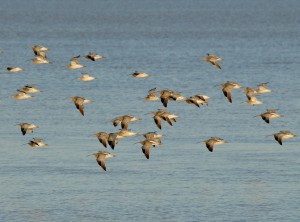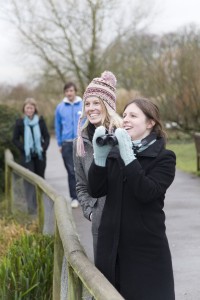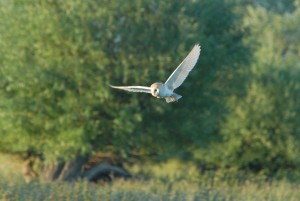Witness nature's most incredible journeys

Autumn is upon us in all its colourful glory and at WWT Washington Wetland Centre, the changing of the seasons brings spectacular new scenery and wildlife.
Enjoy the unforgettable sights and sounds of nature on the move, as skeins of pink-footed geese pass noisily overhead and wading birds including snipe, greenshank and whimbrel stop to refuel at Wader Lake on their migratory passage.
One of our biggest wildlife spectacles – the winter curlew roost – starts to build, peaking at flocks of more than 1,200 swooping down at dusk alongside redshank and teal; one of the UK’s largest freshwater inland curlew roosts.

Our woodlands become a sheltered sanctuary where jays hurriedly bury acorns to last them through the winter ahead. Young barn owls disperse to look for territories. Siskin, redpoll and long-tailed tit gather. And bullfinch gorge on tasty fat balls at Hawthorn Wood feeding station.
Bats, bees, butterflies and mammals start their own incredible journeys too, searching for the ideal conditions or hibernation spots before the cold sets in.
And all around site, our rare and endangered waterbirds go into their best breeding plumage – changing colour with the leaves.
Whether the wildlife is leaving or arriving, hibernating or passing through, autumn offers a rare glimpse into the mystery of migration. Experience the best that the season has to offer on guided warden walks, which bring you closer to the action, and end your incredible journey with a warming cuppa and homemade treat while enjoying breathtaking views from Waterside Café.
Plus, join us for family crafts in the Discovery Centre during October half-term (Saturday 24 October-Sunday 1 November, 1-3.30pm, small costs apply) and learn more about the incredible journeys that both people and birds make on their way to wetlands with our seasonal trail.

Sir David Attenborough, President of the Wildfowl and Wetlands Trust (WWT) said: “Migration is one of the most spectacular phenomenona of the natural world. I’ve dedicated many hours to studying it and making films about it.
“As well as heralding the change of the seasons, we can learn a great deal about our planet through studying birds. WWT Wetland Centres are great places to learn about migration as they attract birds by the tens of thousands in winter – it’s a breathtaking sight if you’re lucky enough to witness it.’’



